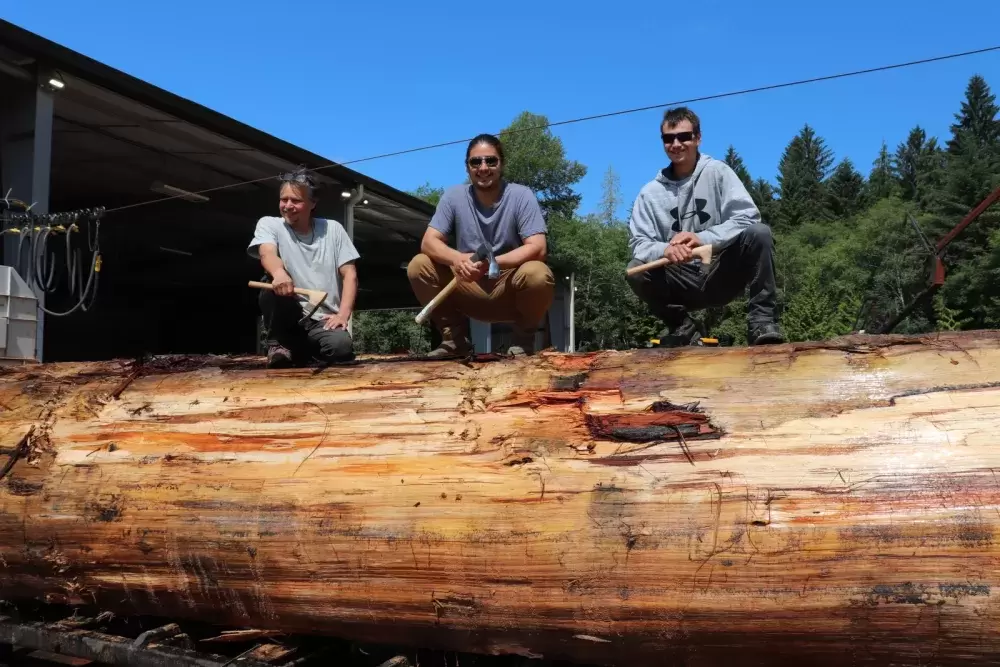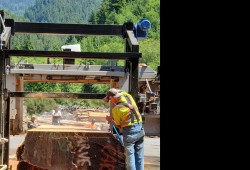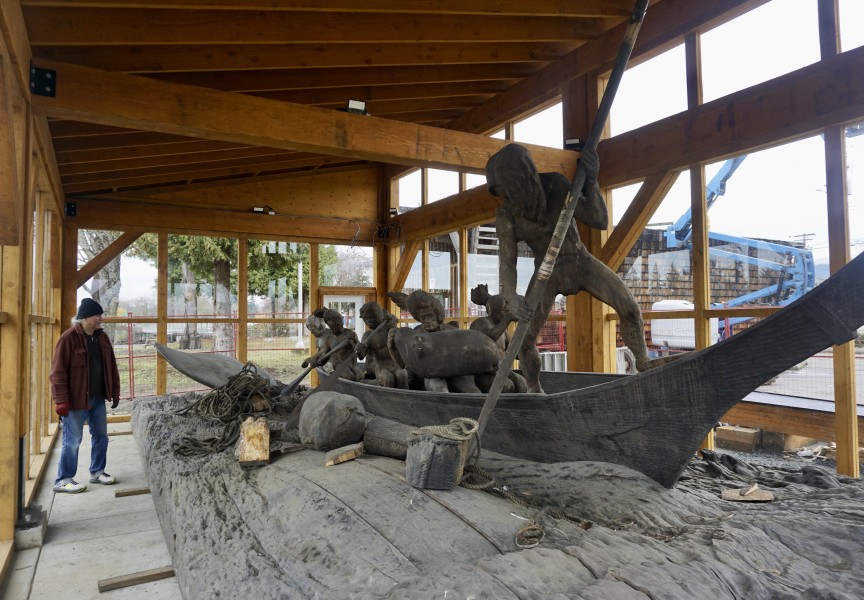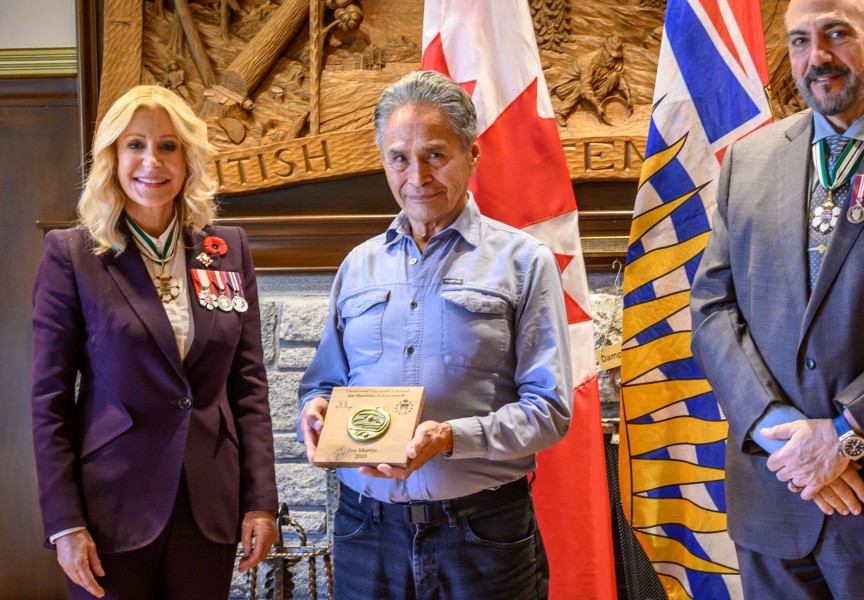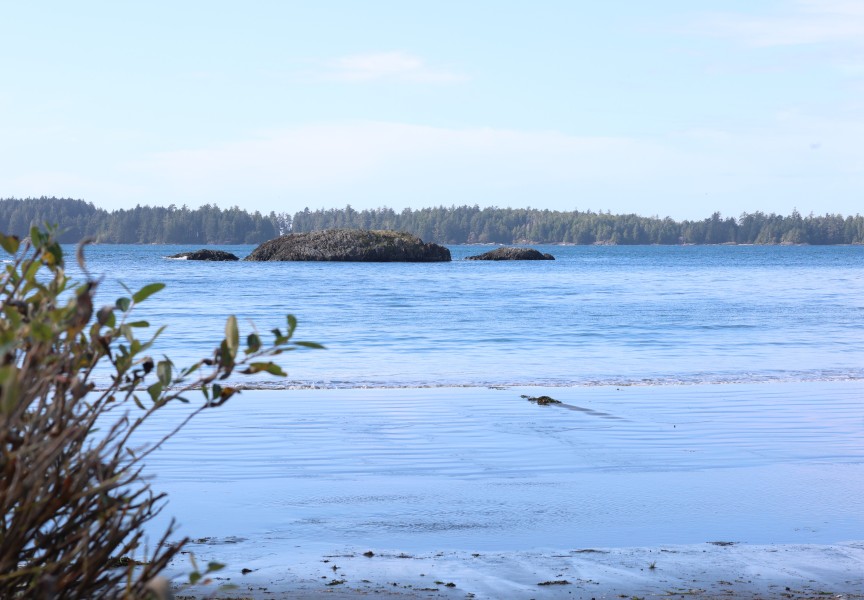It has been several decades since a sea-worthy canoe has been carved in Pacheedaht territory but that is about to change as two PFN youth will spend their summer apprenticing under the guidance of Makah master carver, Hawt’wilth’iayatuk, Micah McCarty.
This rare opportunity came as a result of a partnership between Pacheedaht First Nation and the University of Victoria.
Sarah Wright Cardinal, PhD, is an assistant professor at UVic’s School of Child and Youth Care. She told Ha-Shilth-Sa that she and former PFN Health Director Roxy Jones applied for a UVic substantial grant to fund the ‘Reclaiming Nuu-chah-nulth teachings to empower and strengthen the roles and responsibilities of Pacheedaht young men’ program.
Funded by the Social Sciences & Humanities Research Council of Canada, the project builds on a previous grant project that supported the Pacheedaht community prepare their role in Tribal Journeys 2019.
PFN was awarded a $200,000 grant last year when the pandemic began. Unable to move forward with the project due to provincial health orders, the funding was extended for a year.
The team, made up of PFN and UVic staff, is developing a model of community wellness that engages youth in a remote and rural Indigenous communities.
Cardinal noted that the Pacheedaht, Makah and Ditidaht are all closely related. She recalled the story of the broken rattle told by Ditidaht elder Jimmy Chester. In 2019 the late elder told Ha-Shilth-Sa that the three nations speak the same dialect of the Nuu-chah-nulth language because they are one family.
Chester explained that the Ditidaht and Pacheedaht originally came from Makah. But fear of retribution for accidentally breaking a chief’s sacred rattle sent some of the people paddling across the Strait of Juan de Fuca fearing for their lives.
Chester explained that the Pacheedaht and Ditidaht originally came from Tatoosh Island, off the coast of Cape Flattery in Washington State. They first landed in what is now known as Jordan River but there wasn’t enough food for everyone. The group split and some went inland to Nitinaht Lake and the others stayed on the outer coast, becoming the Ditidaht and Pacheedaht respectively.
For the past several years the Pacheedaht have been working closely with Ditidaht to revive their culture. The two nations have used previous UVic grants to hold language and cultural classes. In 2019 the university donated a pair of Nuu-chah-nulth style fibre glass canoes, allowing the Pacheedaht to take part in Canoe Journeys for the first time.
With the most recent grant, Pacheedaht will take it a step further and learn how to make their own canoes by having a pair of youth apprentice under McCarty. The skills they pick up will be transferable to future generations of Nuu-chah-nulth-aht.
Trent Jones and Trystan Dunn-Jones will learn how to carve a canoe under the direction of their Makah relative McCarty, who underwent two weeks of quarantine before arriving in Port Renfrew. The canoe is expected to be complete in September 2021.
There was a ceremony to officially launch the project on July 1. At that ceremony the canoe log was blessed and people that have been and will be involved in the project were acknowledged.
Early the following morning McCarty went to the Pacheedaht Forestry Mill site to begin work on the log. According to elected chief Jeff Jones, the log, an old growth red cedar, was harvested from Pacheedaht territory. Since traditional dug-out canoes are shaped out of a single log, the occasional harvest of old growth cedar is necessary to keep the art of canoe-making alive.
Chief Jones noted that there are not many mills capable of handling a log this size. In fact, a mill employee needed to use a chainsaw to cut off sections of the log so that it would fit through the Woodmizer.
McCarty and a couple mill workers took some measurements of the log, planning for the most efficient way to mill the log.
“Cedar trees have a natural curve – you need to know how to read the wood and work with that natural bend to accommodate the bow, which curves upward,” said McCarty.
McCarty is a prominent leader in the Pacific Northwest. He has served as Chairman on Makah Tribal Council. He has been to Washington, D.C. to fight for Makah’s whaling rights enshrined in a treaty and for environmental protections.
When asked why he chose to lead this project, McCarty said, “It manifests everything I was raised to value.” McCarty made his first model canoe before he was eight years old.
From grades 1-3 he attended Wa he lut Indian School at Olympia, WA., where he first started carving. “A Haida carver taught me how to make a Makah model canoe,” he said.
By passing on teachings like these, McCarty says it strengthens family ties and allows for the continuity of culture. “It’s about wellness for youth and it allows them to see and witness living culture,” he added.
McCarty himself apprenticed under notable master carvers like Tla-o-qui-aht’s Joe Martin and others. “I’ve been around cedar all my life. I learned how to read cedar and know what shapes you can get out of a piece of wood,” he said.
He says he still has a lot to learn, even after decades of projects. For that reason, he takes a careful and methodical approach to carving canoes.
Sheila Jones is finishing up her 4th year of University in the Child and Youth Care Program. Returning home to work with Pacheedaht youth over the summer is her final course requirement before completing her degree. She had been up late, the night before, plucking eagle carcasses.
Sheila is learning to make regalia from eagle parts with the assistance of an elder in the village that was trained on the proper processing techniques and the respectful treatment of the remains once the feathers and other usable parts are removed.
It is illegal to hunt eagles but, with support from PFN natural resources staff, the nation was able to acquire eagle carcasses from conservations officers for cultural purposes.
The regalia, down and feathers will be used in future celebrations, like the blessing of the canoe when it is finished. These are other skills that will be passed on to PFN members both directly and through social media.
Sheila talked about the importance of bringing back lost skills and the cultural lessons McCarty will bring to the community, and, more importantly, the youth. “He’s a great teacher – he explains things every step of the way,” she said.
She is grateful that her nation has its own sawmill, getting days of work done in a few short hours. Ancient techniques would require that wood be chipped away with hand tools to begin shaping the canoe. With a sawmill, several slabs of wood were sawn from the log, allowing the mill to market the high-end red cedar slabs rather than turning it into wood chips.
Sheila spent the morning at the mill site, live streaming the milling process for Pacheedaht members and maximizing the audience of potential learners.
On July 2 the log was transported to the reserve and placed in front of the band office. This allows for other members of the community to take part in the project.
When asked when the last canoe was carved in Port Renfrew, Sheila recalled canoe projects from about 25 years ago. “There have been attempts and fails,” she said. One canoe cracked and the other was too unstable to use. They are hoping McCarty can repair the cracked canoe.
Chief Jeff Jones said he hopes the project will not only enrich PFN culture but bring unity in his community and with the Makah and Ditidaht relatives.
Both Trent and Tristan will work with McCarty throughout the summer, not only learning how to carve a canoe, but also taking in cultural teachings.
“This is something to look forward to, coming out of COVID. To learn from a master carver like Micah, this opportunity is huge and rare,” said Jeff Jones.
McCarty says he is happy to share what he has learned to next generations. “I will become an ancestor someday,” said McCarty. “I revere ancestors, and the more we add life to culture, the better,” he said.

